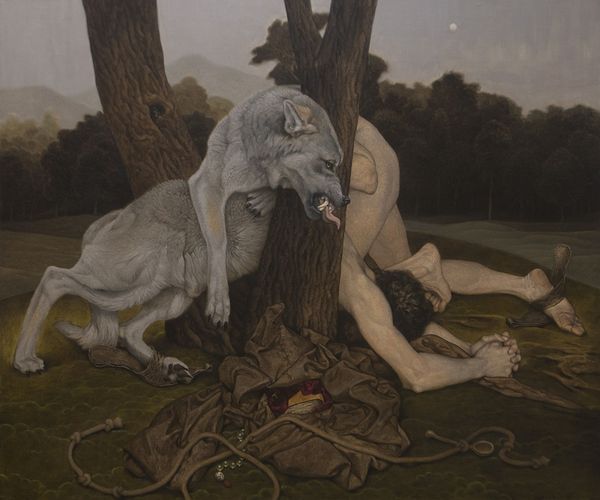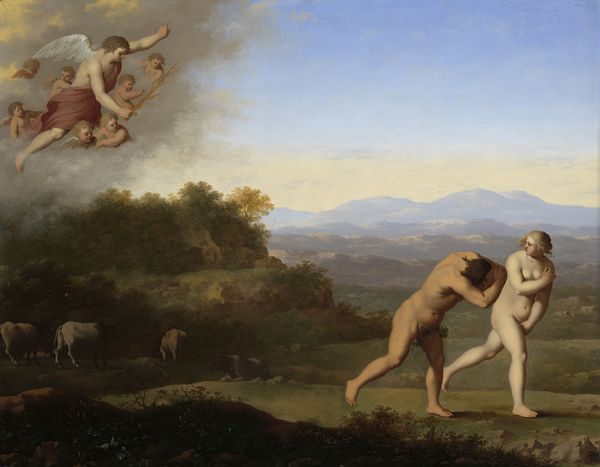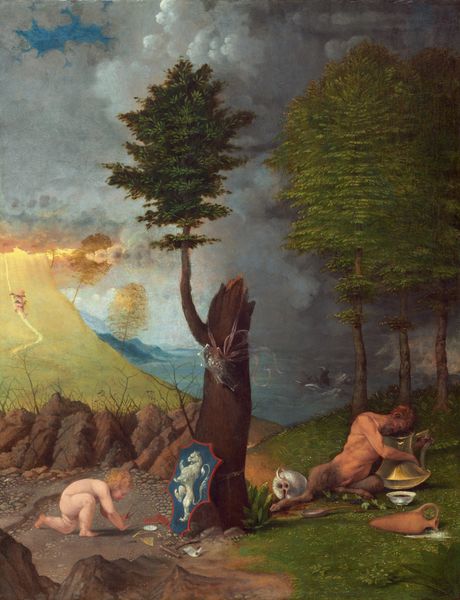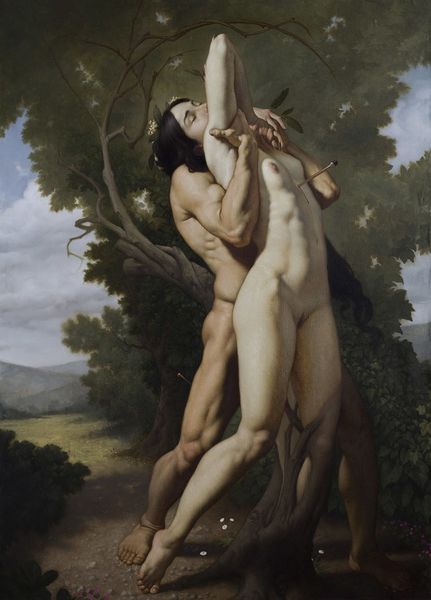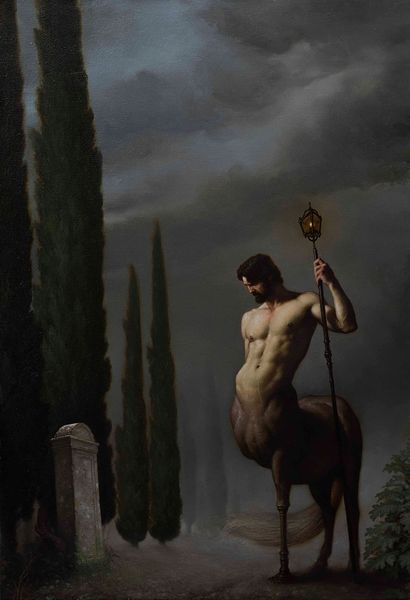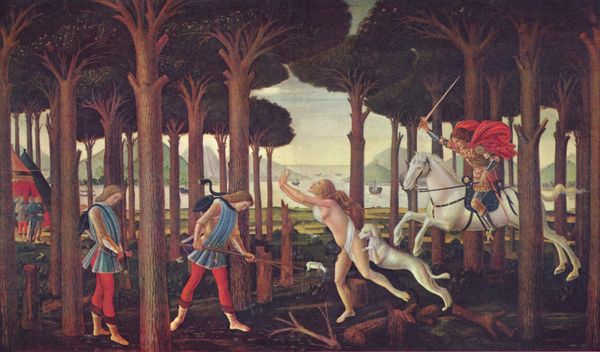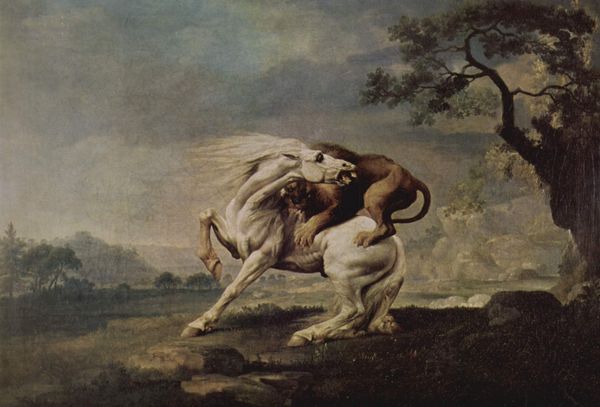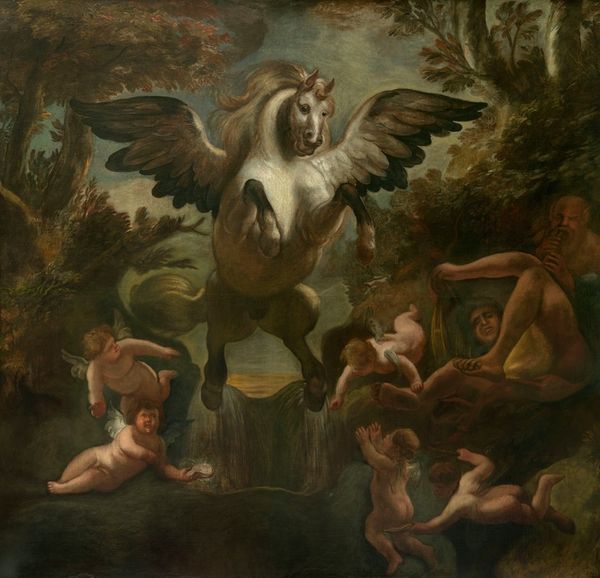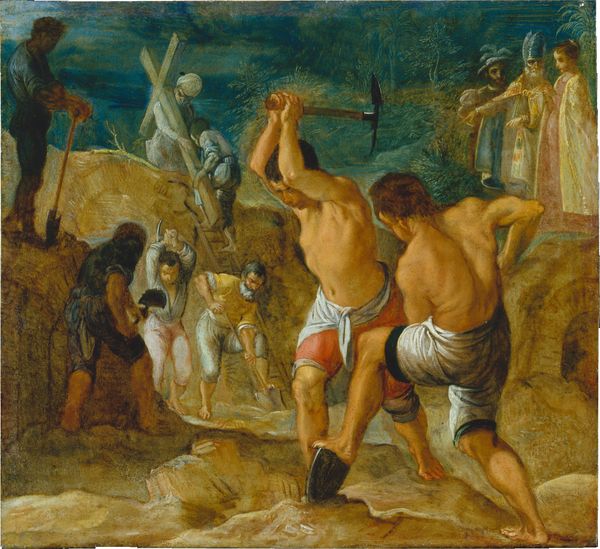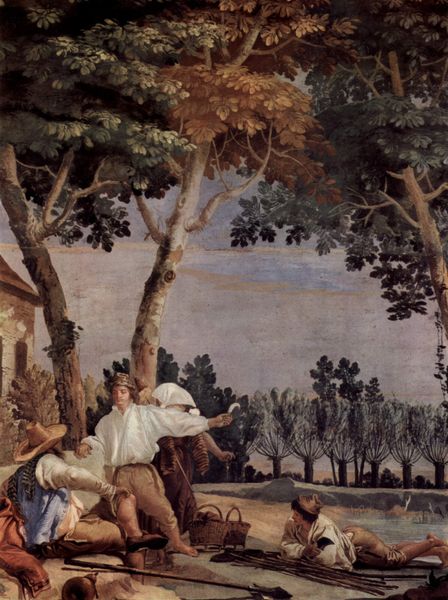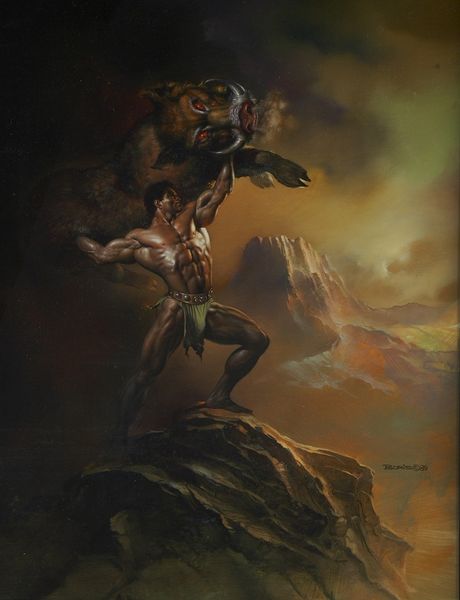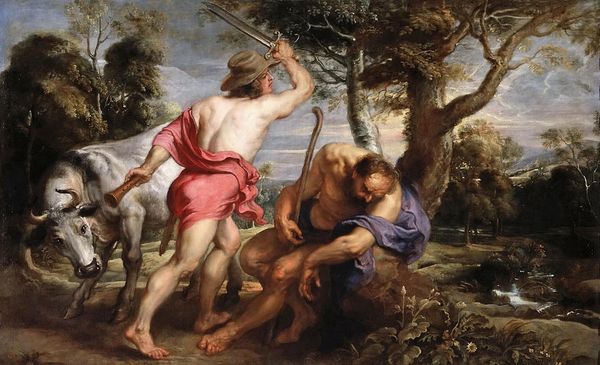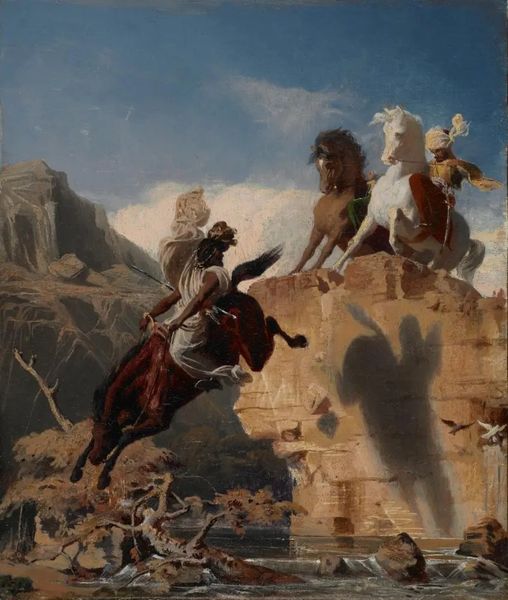
painting, oil-paint
#
allegory
#
painting
#
oil-paint
#
landscape
#
classical-realism
#
figuration
#
mythology
#
genre-painting
#
history-painting
#
realism
Copyright: Modern Artists: Artvee
Editor: Here we have Konstantin Korobov's oil painting, "Centaurus," though its exact date is unknown. The painting portrays a centaur fending off a wolf in a rather classical style. I am struck by the implied narrative; the piece evokes this sense of wildness meeting civilization. What stands out to you about it? Curator: I’m particularly interested in the socio-political undercurrents one might read into it. Consider the long history of representing centaurs. Often they embodied base instincts, a threat to the Apollonian ideals of Western society. But here, defending against a wolf? Is Korobov suggesting a more complex role for these mythological beings? Are they now protectors, maybe even symbols of a more integrated relationship with nature, pushing back against what it means to be "civilized"? Editor: That’s a fascinating point! The animal skin draped over the Centaur is adding to that discourse, contrasting "nature" with "culture". Does the realism style play into that too? Curator: Precisely. The style of realism in itself is already a cultural act, trying to represent 'truth'. But whose truth? For whom is the wild dangerous? Think about how such imagery served nationalistic agendas by naturalizing cultural ideologies in the late 19th and early 20th centuries. In light of our contemporary lens, can we view the piece outside of those political frameworks? Perhaps Korobov is encouraging us to challenge these dichotomies? Editor: I hadn't considered the potential nationalist readings of this type of genre-scene, it provides additional layers of understanding to what seemed like just a classical painting at first glance. Curator: Exactly! It's in looking at the cultural uses of images where much of the insight and power emerges. Hopefully it allows new readings.
Comments
No comments
Be the first to comment and join the conversation on the ultimate creative platform.
